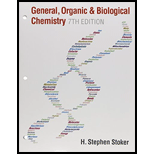
(a)
Interpretation:
The given reaction is an alkylation reaction or not has to be indicated.
Concept Introduction:
Alkylation reaction is a reaction in which the transfer of alkyl group from one molecule to another molecule takes place. While considering
(b)
Interpretation:
The given reaction is an alkylation reaction or not has to be indicated.
Concept Introduction:
Alkylation reaction is a reaction in which the transfer of alkyl group from one molecule to another molecule takes place. While considering amines, the alkylating agent that is used is alkyl halides. Alkylation is done under basic conditions. The general equations for amines alkylation process is,
(c)
Interpretation:
The given reaction is an alkylation reaction or not has to be indicated.
Concept Introduction:
Alkylation reaction is a reaction in which the transfer of alkyl group from one molecule to another molecule takes place. While considering amines, the alkylating agent that is used is alkyl halides. Alkylation is done under basic conditions. The general equations for amines alkylation process is,
(d)
Interpretation:
The given reaction is an alkylation reaction or not has to be indicated.
Concept Introduction:
Alkylation reaction is a reaction in which the transfer of alkyl group from one molecule to another molecule takes place. While considering amines, the alkylating agent that is used is alkyl halides. Alkylation is done under basic conditions. The general equations for amines alkylation process is,
Want to see the full answer?
Check out a sample textbook solution
Chapter 17 Solutions
Bundle: General, Organic, and Biological Chemistry, 7th + OWLv2 Quick Prep for General Chemistry, 4 terms (24 months) Printed Access Card
- Select the aldol condensation product of the following reaction. a A b B с C d D e E A H HO H NaOH, EtOH heat H H B D Earrow_forwardThe following compounds are to be synthesized through a mixed aldol conduction reaction. Draw two chemical structures of aldehyde or ketone.arrow_forwardIdentify any combination reactions. (Select all that apply.) C4H10 + O2 → CO2 + H2O S8 + O2 → SO3 NaNO3 → NaNO2 + O2 HgO → Hg + O2 Ga + H2SO4 → Ga2(SO4)3 + H2 AgCl2 + H2 → Ag + HCl none of the above Identify any decomposition reactions. (Select all that apply.) C4H10 + O2 → CO2 + H2O S8 + O2 → SO3 NaNO3 → NaNO2 + O2 HgO → Hg + O2 Ga + H2SO4 → Ga2(SO4)3 + H2 AgCl2 + H2 → Ag + HCl none of the abovearrow_forward
- Balance each of the following redox reactions occurring in acidic solution. |-(aq)+NO-2(aq)→12(s)+NO(g)l-(aq)+NO2- (aq)→12(s)+NO(g) Express your answer as a chemical equation. Identify all of the phases in your answer. ClO-4(aq)+Cl-(aq)→CIO-3(aq)+CI2(g)CIO4- (aq)+Cl-(aq)→Cİ03-(aq)+Cl2(g) Express your answer as a chemical equation. Identify all of the phases in your answer. NO-3(aq)+Sn2+(aq)→Sn4+(aq)+NO(g)NO3- (aq)+Sn2+(aq)→Sn4+(aq)+NO(g) Express your answer as a chemical equation. Identify all of the phases in your answer.arrow_forwardPlease draw the major product(s) of the following reaction and show the mechanism. Is there a reason why one stereochemistry is preferred over the other for this reaction?arrow_forwardPropose a mechanism for the following reaction:arrow_forward
- Consider the intermolecular forces present in a pure sample of each of the following compounds: CH₃CH₂OH and CH₃COCH₃. Identify the intermolecular forces that these compounds have in common.arrow_forwardWhich of these statements concerning this reaction is true? acetaldehyde + NADH ↔ ethanol + NAD+ a) Ethanol is more reduced than acetaldehyde. b) Acetaldehyde is more reduced than ethanol. c) NAD+ is more reduced than NADH. d) Ethanol is more oxidized than acetaldehyde.arrow_forwarddraw all the structures of the tribasic amino acid lysine involved in the equilibrium reactions that would take place during titration against NaOH, starting with the fully protonated form below (draw the R-group in full). H;N+- CH - COOH (CH2)4 NH3+arrow_forward
- Show how the Michaelis-Menten Equation was derived from this reaction. k1 k2 E + S = e ES E + Parrow_forwardProvide A, B and C in the above reaction.arrow_forwardPotassium nitrate is widely used in industries. The reaction for the industrial production of KNO3 is summarized in the equation below; 4KCl + 4 HNO3 + O2 → 4 KNO3 + 2 Cl2 + 2 H2O Which of the following statements below is correct about the production of KNO3? a. A redox reaction; KCl is a reducing agent and O2 is an oxidizing agent b. A redox reaction; HNO3 is a reducing agent and Cl is an oxidizing agent c. Not a redox reaction d. A redox reaction; KCl is a reducing agent and KNO3 is an oxidizing agent e. A redox reaction; HNO3 is a reducing agent and KNO3 is an oxidizing agentarrow_forward
 Human Anatomy & Physiology (11th Edition)BiologyISBN:9780134580999Author:Elaine N. Marieb, Katja N. HoehnPublisher:PEARSON
Human Anatomy & Physiology (11th Edition)BiologyISBN:9780134580999Author:Elaine N. Marieb, Katja N. HoehnPublisher:PEARSON Biology 2eBiologyISBN:9781947172517Author:Matthew Douglas, Jung Choi, Mary Ann ClarkPublisher:OpenStax
Biology 2eBiologyISBN:9781947172517Author:Matthew Douglas, Jung Choi, Mary Ann ClarkPublisher:OpenStax Anatomy & PhysiologyBiologyISBN:9781259398629Author:McKinley, Michael P., O'loughlin, Valerie Dean, Bidle, Theresa StouterPublisher:Mcgraw Hill Education,
Anatomy & PhysiologyBiologyISBN:9781259398629Author:McKinley, Michael P., O'loughlin, Valerie Dean, Bidle, Theresa StouterPublisher:Mcgraw Hill Education, Molecular Biology of the Cell (Sixth Edition)BiologyISBN:9780815344322Author:Bruce Alberts, Alexander D. Johnson, Julian Lewis, David Morgan, Martin Raff, Keith Roberts, Peter WalterPublisher:W. W. Norton & Company
Molecular Biology of the Cell (Sixth Edition)BiologyISBN:9780815344322Author:Bruce Alberts, Alexander D. Johnson, Julian Lewis, David Morgan, Martin Raff, Keith Roberts, Peter WalterPublisher:W. W. Norton & Company Laboratory Manual For Human Anatomy & PhysiologyBiologyISBN:9781260159363Author:Martin, Terry R., Prentice-craver, CynthiaPublisher:McGraw-Hill Publishing Co.
Laboratory Manual For Human Anatomy & PhysiologyBiologyISBN:9781260159363Author:Martin, Terry R., Prentice-craver, CynthiaPublisher:McGraw-Hill Publishing Co. Inquiry Into Life (16th Edition)BiologyISBN:9781260231700Author:Sylvia S. Mader, Michael WindelspechtPublisher:McGraw Hill Education
Inquiry Into Life (16th Edition)BiologyISBN:9781260231700Author:Sylvia S. Mader, Michael WindelspechtPublisher:McGraw Hill Education





